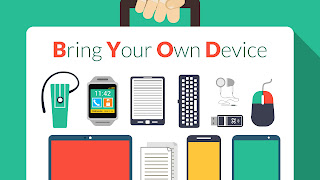Twitter Feed
SOA-R!! Another Hit !!
Yesterday’s SOA-R event coverage by TECH Bisnow Washington was yet another indication that cloud computing is real in the Federal space. Thanks goes to Mr. Dave Stegon from Bisnow on Business and Pauline Healy from Apptis. Thanks…
World Summit of Cloud Computing, December 1-2, 2008, Wohl Centre, Ramat Gan, Israel
I am proud to announce that I’ve been invited to speak at the “World Summit of Cloud Computing“, December 1-2, 2008, at the Wohl Centre in Ramat Gan, Israel. As…
MIT Survey: What A Response !!
We’ve been quite surprised by the number of survey responses we’ve received. THANK YOU !! That subset of the cloud computing community interested in national security and public sector applications…
Cloud Auction Business Model
The other day I talked about how cloud computing could change the government’s budgeting process. Well what about this! Last week, Google filed a patent application that describes a system…
Oracle: To Cloud or Not To Cloud …
First Oracle’s Larry Ellison bashes cloud computing as nothing but hype and then his company announces that it will let customers run Oracle 10g and 11g databases and its Fusion…
Capacity planning in a cloud environment
In her post “Cloud computing killed the capacity star“, Ivanka Menken brings up some good points. Just think what changes this could bring to the government budgeting process. The trends…
Cloud Databases
Joab Jackson, in his “Cloud computing leaving relational databases behind” article, makes some pretty interesting points on the incompatibility of relational databases with cloud-based infrastructures. He first list the various…
The 6 layers of the Cloud Computing Stack
From Sam Johnston’s Taxonomy post Clients (examples) are computer hardware and/or computer software which rely on The Cloud for application delivery, or which is specifically designed for delivery of cloud…
Thank You KMI Media Group
In this month’s Editor’s Perspective, Mr. Harrison Donnelly announced the new KMI Media Group collaborative effort. Military Information Technology will be using the blogosphere to get their government and industry…
VMware, Cisco and the Virtual Datacenter
Last week, VMware and Cisco announced their latest collaboration for the virtual datacenter of the future. The Cisco Nexus® 1000V distributed virtual software switch is expected to be an integrated…
- Increased employee mobility (63%), satisfaction (56%) and productivity (55%) dominate as the top drivers of BYOD. These employee related drivers are considered more important than reduced costs (47%).
- Security (39%) and employee privacy (12%) are the biggest inhibitors of BYOD adoption.
- 20% of surveyed organizations have suffered a mobile security breach, primarily driven by malware and malicious WiFi.
- Security threats to BYOD impose heavy burdens on organizations’ IT resources (35%) and help desk workloads (27%).
- Despite increasing mobile security threats, data breaches and new regulations, only 30% of organizations are increasing security budgets for BYOD in the next 12 months and 37% have no plans to change their security budgets.
- 72% – Data leakage/loss
- 56% – Unauthorized access to company data and systems
- 54% – Downloading of unsafe apps or content
- 52% – Malware
- 50% – Lost or stolen devices
- 49% – Vulnerability exploitation
- 48% – Lack of control on endpoint security
- 39% – Infrequent software updates
- 38% – Compliance
1. Create your policy before procuring technology: To effectively use mobile device management (MDM) technology for employee owned devices Policy must precede technology. Also note that these policies will have broad corporate-wide implications for IT, HR, legal, and security.
- Mobile device management
- Application security assessments
- Application testing services
- Application source code security assessments; and
- Embedded device security.
This post was brought to you by IBM Global Technology Services. For more content like this, visit ITBizAdvisor.com.
( Thank you. If you enjoyed this article, get free updates by email or RSS – © Copyright Kevin L. Jackson 2017)
Cloud Computing
- CPUcoin Expands CPU/GPU Power Sharing with Cudo Ventures Enterprise Network Partnership
- CPUcoin Expands CPU/GPU Power Sharing with Cudo Ventures Enterprise Network Partnership
- Route1 Announces Q2 2019 Financial Results
- CPUcoin Expands CPU/GPU Power Sharing with Cudo Ventures Enterprise Network Partnership
- ChannelAdvisor to Present at the D.A. Davidson 18th Annual Technology Conference
Cybersecurity
- Route1 Announces Q2 2019 Financial Results
- FIRST US BANCSHARES, INC. DECLARES CASH DIVIDEND
- Business Continuity Management Planning Solution Market is Expected to Grow ~ US$ 1.6 Bn by the end of 2029 - PMR
- Atos delivers Quantum-Learning-as-a-Service to Xofia to enable artificial intelligence solutions
- New Ares IoT Botnet discovered on Android OS based Set-Top Boxes


